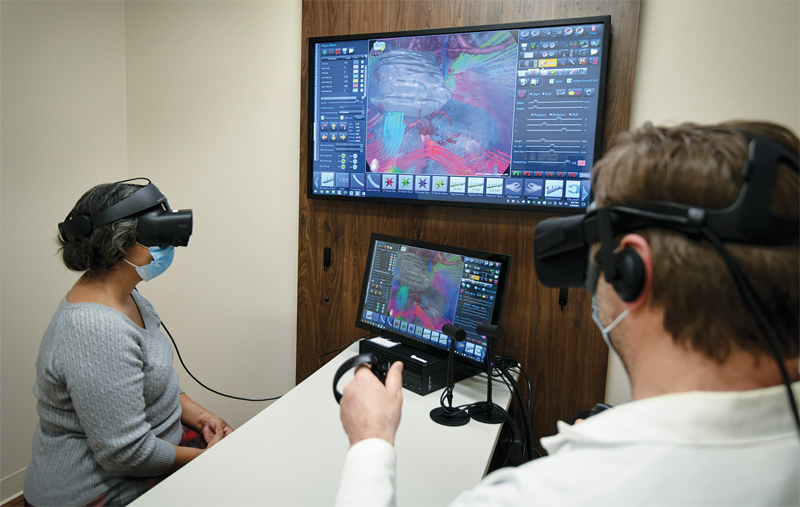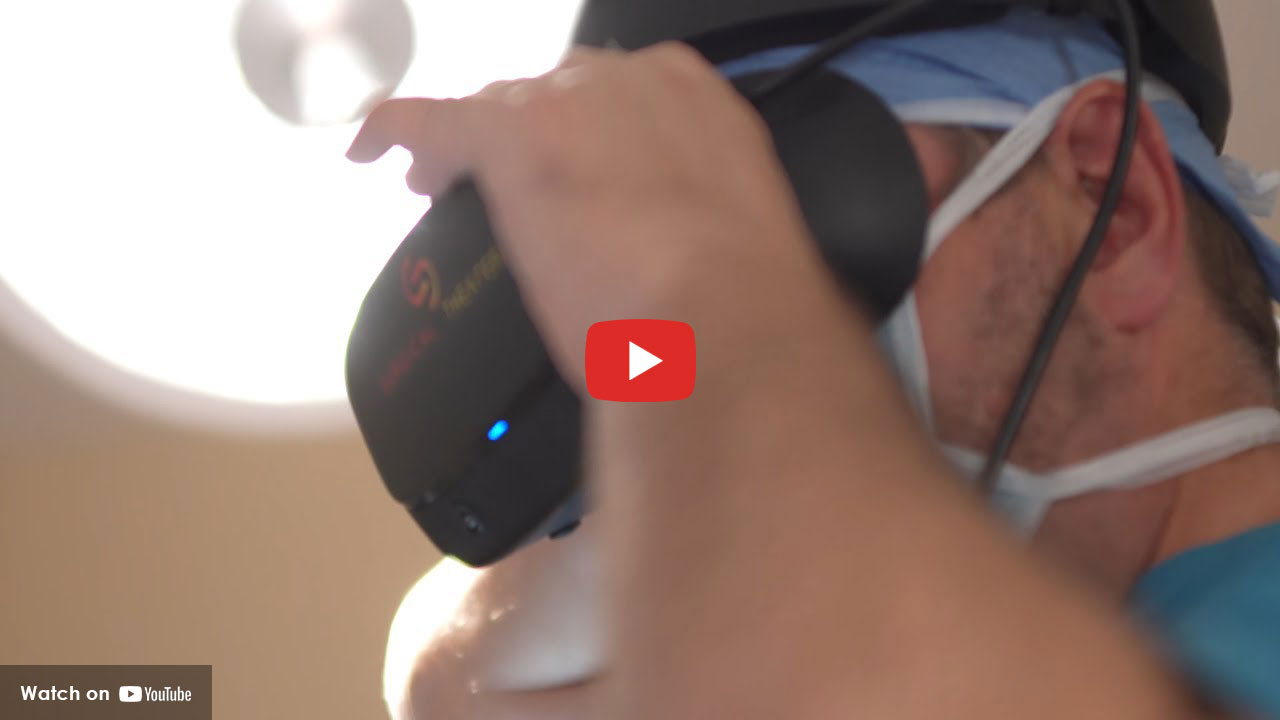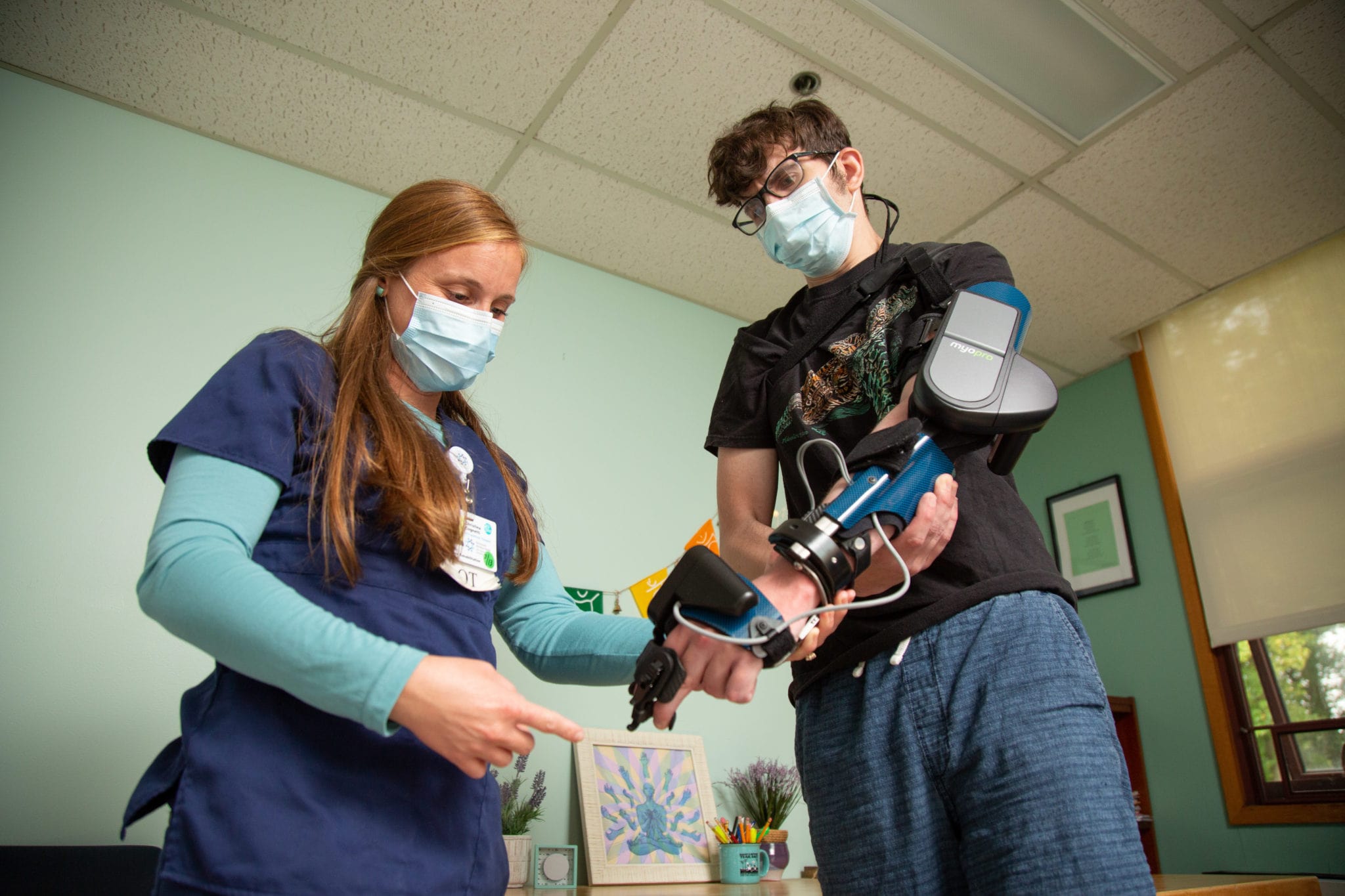The Future of Surgery: Virtual Reality

April 14, 2021
For many of us, virtual reality (VR) is nothing more than the latest trend in video games. But for the team at JFK University Medical Center’s Neuroscience Institute, it’s a cutting-edge tool that’s transforming medical care for both patients and neurosurgeons.
JFK is currently the only hospital in New Jersey to use Surgical Theater’s VR technology. By taking conventional 2D medical imaging—such as MRI and CT—and combining it with the simulation technology, the team can create a 360-degree VR reconstruction of an adult or pediatric patient’s brain. With a VR headset and joysticks, doctors and patients can then take a tour of the patient’s anatomy and pathology.
“It allows you to fly into the brain and look at different anatomical structures and the different pathologies, like a brain tumor or an aneurysm. You can fly all the way around it and look at it from every different angle. It’s almost like you can reach out and touch it,” says Thomas Steineke, M.D., Ph.D., FAANS, a neurosurgeon and chairman of the Neuroscience Institute.
Why Virtual Reality?
Conventional 2D imaging can be difficult for patients to interpret, adding to any apprehension or confusion they may be feeling. VR technology gives patients a realistic and understandable view of what’s happening in their brain and what their surgery will entail.
“When a patient can see, for example, how little blood flow is getting to their brain, their eyes open wide, and they get it. Seeing is really believing,” says vascular neurologist Farah Fourcand, M.D. “It resonates with people and empowers them.”
Before surgery, patients don the VR headset to “fly through” their brain. Their surgeon can show them where their tumor is and how it will be removed, step by step. Patients even see what device will be used and what it will look like in their brain. The use of color and labels makes it easier for patients to understand what they are seeing. This fly-through can be recorded for the patient to take home and show loved ones.
VR is also used as part of follow-up care. “We can show patients what happened, how the aneurysm has either grown in size or where it shrinks or disappears after treatment,” says vascular neurologist Siddhart Mehta, M.D.
Improving Surgeries
The VR platform is also changing the way surgeries are planned, practiced and performed. Without VR, surgeons need to imagine the patient’s brain in three dimensions as they look at conventional 2D imaging. VR creates that 3D view for them.
“You can do a fly-through of the tumor and see it from every direction, and specifically see it from the approach you plan to take. That allows you to pre-plan. Am I making a big enough bone opening? Is this the best way to position the patient? What do we need to avoid to stay safe?” says neurosurgeon Yevgenia Shekhtman, M.D., FAANS.
During surgery, the VR software can be integrated with conventional surgical software, creating a “3D GPS system for the brain,” says Dr. Shekhtman. “The traditional software shows us where we are in the brain in black-and-white MRI slices. With VR, we also can see the 3D version of that, so we have multiple screens working at the same time.”
VR also reduces the amount of time spent in the operating room. Dr. Steineke recently presented research that found using VR resulted in a significant decrease in operative time—about 80 minutes for a four-to-five-hour surgery. This decrease reduces the risk of complications, including infections and time under anesthesia.
Innovative Future
Surgical Theater recently received FDA approval for the integration of its 3D VR technology with the operative microscope. JFK is one of only 10 institutions nationally to use this technology. This new advance will overlay 3D VR data onto the live microscope image. This means surgeons can see where they are in relation to the 3D picture at any given time and allows them to zoom inside the brain. “Before you do any dissection, you can see exactly where the hemorrhage is, even though it’s 3 or 4 inches deep inside the brain. It’s as if you’re looking through the brain,” says Dr. Steineke.
VR has already proven to be an effective tool for improving patient education and care. Dr. Steineke is also optimistic about its impact on the future of health care. “I think the use of VR and augmented reality will be transformative. We’re one of a very few sites doing it right now, but I think in five to 10 years, almost every site that does high-level neurosurgical care will be using it,” he says. “It’s starting to be employed with thoracic surgery, general surgery and orthopedics.”
Next Steps & Resources:
- Meet your sources: Thomas Steineke, M.D., Ph.D., FAANS, Farah Fourcand, M.D., Siddhart Mehta, M.D., and Yevgenia Shekhtman, M.D., FAANS
- To make an appointment with a provider call 800-822-8905 or visit our website
- Learn more about the Brain and Spine Tumor Program at JFK University Medical Center
The material provided through HealthU is intended to be used as general information only and should not replace the advice of your physician. Always consult your physician for individual care.







